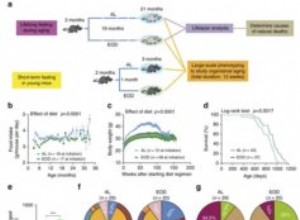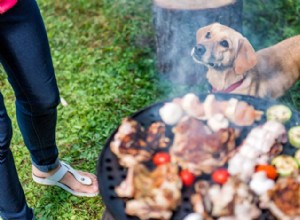野菜が人間にとってどれほど有益かは誰もが知っていますが、犬も野菜を食べることができますか?答えは、野菜次第です。犬の仲間にとって安全で有益なものもあれば、消化するのが難しいものもあります. 一部の野菜には、臓器の損傷につながる可能性のある化合物や酸が含まれています.
ペットの食事と栄養に関して十分な情報に基づいた決定を下せるように、犬が安全に食べられるすべての野菜と、毒性があり避けるべき野菜の詳細なリストをまとめました。
目次:
プロのヒント: ペット保険は、愛犬が摂取してはいけないものを摂取した場合の獣医の治療費をカバーするのに役立ちます。ペット保険プランは、薬、X 線、入院、手術などの費用を払い戻すことができます。
確かに犬は肉が大好きで、食べる必要がありますが、野菜は肉にはない栄養素をペットに提供することもできます.
野菜には、ビタミン、ミネラル、繊維、植物栄養素、抗酸化物質が豊富に含まれており、そのすべてが病気と闘う可能性があります。 また、消化を助ける酵素も含まれており、水分含有量が高いため優れた水分補給源です。
しかし、人間とは異なり、犬は野菜だけでは成長できません。バランスの取れた栄養を維持するために、ペットはさまざまな食品を食べる必要があります。そのため、野菜は子犬の 1 日のカロリー摂取量の 10% を超えてはなりません。
したがって、犬の食事を健康的なおやつで補おうとしているが、どこから始めればよいかわからない場合は、犬が食べてもよい野菜と避けたほうがよい野菜の完全なリストを以下に示します。

犬はセロリを食べても大丈夫?間違いなく、植物はビタミンAが豊富で、ペットの視力を改善するだけでなく、ビタミンB、C、K、カリウム、マンガンも含まれています.この低カロリーの野菜は、犬にとって素晴らしい自然な息の清涼剤であり、多くの子犬はその歯ごたえのある食感を噛むのが大好きですが、与える量に注意してください.セロリは天然の利尿剤であるため、大量に与えると犬の排尿回数が増える可能性があります。
ブロッコリーは繊維、ビタミン A、C、E、K の優れた供給源であり、脂肪はほとんど含まれていません。茎はペットの喉に詰まりやすいので、細かく刻んでください。また、ブロッコリーの小花には、キャベツ、カリフラワー、ケールなどのすべてのアブラナ科の野菜に含まれる潜在的に有害な成分であるイソチオシアネートが含まれており、犬によっては胃の痛みを引き起こす可能性があることにも注意してください.
このアブラナ科の野菜には、ビタミン C、B1、B6、K のほか、愛犬の全体的な健康を改善する植物栄養素が含まれています。ただし、キャベツはペットのガス欠を引き起こすため、適度に与える必要があります。生のキャベツにはチオシアン酸も含まれており、大量に摂取すると甲状腺を抑制し、犬の甲状腺機能低下症を引き起こす可能性があります.
にんじんは、食物繊維、ビタミンB、E、C、D、Kが豊富で、低カロリーです。生で食べると、これらのオレンジ色の野菜は犬の歯をきれいに保つのに役立ちます.ただし、生のにんじんは消化しにくいため、蒸して提供する方がよいでしょう。
アスパラガスには、ビタミン B6、C、E、K、チアミン、ナイアシン、銅、カリウム、クロム、セレンなどのミネラルが豊富に含まれています。犬用の生のアスパラガスは、噛むスティックの優れた代替品になります。飲み込みやすくするために、槍をグリルまたは蒸します。
ズッキーニはカロリーが低く、繊維が豊富で、犬の骨、腎臓、心臓を強化する豊富なビタミンとミネラルを提供します。皮膚を柔らかくするために、ペットに提供する前にズッキーニを蒸すのが最善です.
カリフラワーは、オメガ 3 脂肪酸、ビオチン、マンガン、リン、ビタミン B、C、K を提供し、これらはすべて免疫システムを強化するのに最適です。このリストにある他のアブラナ科の野菜と同様に、カリフラワーは犬をガス欠状態にする可能性があるため、少量であれば安全です。生のカリフラワーは消化しにくいので、軽く火にかけた(蒸した)状態でペットに与えるのがベストです。
黒豆、ピント豆、レッドキドニー豆、バタービーンズは、植物性タンパク質と、カリウム、マグネシウム、葉酸などの栄養素の優れた供給源です.ただし、ガスが発生しやすいので、適度な量を与える必要があります。 Green beans are great for dogs because they’re full of nutrients and can be served raw, steamed, or even canned, as long as they’re plain.
Dogs can safely consume potatoes, as long as they’re well cooked (boiled, baked, or steamed) all served plain. Never feed your pet raw potatoes, as they contain solanine, a compound that can be toxic to dogs. Fried potatoes should also be avoided because they’re high in fat.
Dogs can eat spinach, a great source of iron, magnesium, vitamins A, C, and E. All these nutrients make this leafy green very effective in preventing inflammation, cardiovascular disease, and even cancer. On the flip side, spinach contains oxalic acid, a compound that blocks the absorption of calcium in the body and can cause damage to the kidneys, so it should be fed in moderation.
Kale is considered a superfood for humans and they offer health benefits for dogs, too. Rich in vitamins A, K, and calcium, this dark, leafy vegetable is great for canines’ vision, immunity, and bones. It’s also a good source of iron, the mineral responsible for healthy red blood cells. However, kale also contains calcium oxalate, a building block of some bladder stones, and isothiocyanates, which can cause gastric irritation in dogs and may even be toxic if consumed in large amounts.
Pumpkin is chock-full of vitamins, minerals, and dietary fiber. It’s also low in calories, tasty, and aids digestion. Lightly cooked pumpkin is easiest for dogs to digest and, if fed in small quantities, it can help alleviate constipation in dogs. Canned pumpkin is also safe for dogs as long as it doesn’t contain sugar or additives. Pumpkin seeds can also be fed to dogs, but make sure they’re plain (no salt, butter, or oil).
Beets are rich in vitamin C, folate, manganese, potassium, and dietary fiber. Avoid feeding raw beets as they can be a serious choking hazard and obstruct your dog’s digestive tract. Cooked beets, on the other hand, contain oxalate, and should be avoided by dogs prone to bladder stones. These bright red veggies are also acidic in nature and can cause stomach upset, diarrhea, or vomiting in some dogs.
Cucumbers are rich in vitamins B1, C, and K, as well as biotin, copper, potassium, and magnesium. They’re very low in calories, which makes them an ideal snack for dogs that are overweight. Cucumbers are also 96% water, so they make a perfect refreshing snack on a hot summer day.
Peppers contain three times as much vitamin C as oranges which, combined with beta-carotene, helps strengthen the immune system, protect eyesight, and act as a natural anti-inflammatory. The best way to serve peppers is by steaming them in order to soften their exterior skin. If you decide to serve them raw, be sure to cut them into small pieces. Don’t forget to double-check if you’re feeding spicy pepper varieties to your pet.
Sugar snap, English, snow, and garden peas are all good for dogs. These little greens balls are rich in vitamins A, B, and K, minerals like iron, magnesium, potassium, and zinc, as well as fiber, protein, and lutein. Be sure to serve them in moderation as large amounts can cause diarrhea. Peas should not be given to dogs with kidney issues as they contain purines which can be difficult for the kidneys to process.
Sweet potatoes and yams are very rich in fiber plus vitamins B6 and C. Like carrots, they also contain beta-carotene which improves skin and vision. Similar to regular potatoes, these orange veggies should only be served cooked (boiled or baked) and without any seasonings.
Brussels sprouts are a great source of vitamins C and K, which makes them great for boosting immunity and improving bone health. They also contain antioxidants that fight against inflammation. Brussels sprouts aid digestion and can help if your dog is constipated, but they can also cause gas and result in flatulence. Be sure to cook the sprouts before offering them to your pet.
Similar to cucumber, lettuce contains a lot of water (90%), which makes it a perfect snack for overweight doggies. Be sure to chop the lettuce up before feeding to avoid a choking hazard.
As part of the allium plant family, onions and chives are toxic to dogs. If your dog has eaten onions and you notice symptoms like dark yellow urine, decreased energy levels, vomiting, and/or diarrhea, be sure to contact your vet right away.
Similar to onions, this smelly vegetable is healthy for humans but toxic to dogs. If eaten in small amounts, garlic can result in diarrhea and vomiting, but bigger amounts can cause red blood cells to burst, leading to anemia. This leads to loss of energy, weakness, and collapse.
Mushrooms bought in the supermarket are generally not harmful to dogs, as long as they’re served plain and in small amounts. However, some wild mushrooms are very toxic and should never be given to dogs. Signs of mushroom poisoning include diarrhea, excessive drooling, poor coordination, collapse, and death. If your dog ingests a wild mushroom, contact your vet immediately.
Corn itself isn’t harmful to dogs but it also doesn’t offer much nutritional value for them. If you decide to give your dog corn, offer it in small quantities. Never give your pet corn cobs as they can cause a life-threatening intestinal blockage if swallowed.
Tomatoes are a member of the nightshade family, which means that they contain solanine, a toxic chemical that can cause seizures and tremors. Although ripe tomatoes are generally safe for dogs, the stems, leaves, and green produce of the plant contain higher amounts of solanine. Therefore, be very careful if you have a vegetable garden that your pup can rummage around.
Eggplant is another member of the nightshade family and is linked to allergic reactions in some dogs. Be sure to start with a small quantity of cooked eggplant, to see if your dog tolerates this veggie or not.
Radishes aren’t toxic to dogs but the shape can be quite dangerous. If your pet swallows a whole radish, they might end up with serious intestinal obstruction. So, if you decide to feed radishes to your pet, be sure to slice them thinly first.
プロのヒント: Pups can be guilty of ingesting strange items and forbidden foods, causing their owners lots of worries and astronomic vet bills. Pet insurance is designed for unpredictable accidents and illnesses that could happen to your four-legged companion.

Small pieces of dog-safe vegetables, such as pumpkin, carrots, green beans, sweet potatoes, broccoli, or cauliflower make delicious and healthy treats for puppies, as long as they are cooked, finely cut, and served plain.
However, bear in mind that treats shouldn't comprise more than 5% of your puppy’s diet, so veggies should be offered in small amounts and as occasional treats.
Consult with your vet about your puppy’s nutrition and whether it is safe to feed them the vegetables included in our dog-safe list.
Just like with any new human food, it’s best to introduce vegetables into your dog’s diet slowly. Start with a small amount and keep an eye on your pup. If they don’t show adverse reactions like diarrhea, vomiting, or excess gas, increase the amount gradually.
As a rule of thumb, if humans can eat a certain vegetable raw, so can dogs. So, it’s perfectly fine to offer raw celery or green beans, but you must always cook veggies like potatoes and yams.
Be sure to always cut the veggies into small, bite-sized pieces in order to reduce the risk of choking.
Serve the vegetables plain, without any salt, butter, spices, or oils. By adding any of these, you will not only destroy the nutritional value of vegetables but also cause harm to your four-legged friend.
In general, gently cooking (steaming, grilling, or blanching) will make the vegetables easier for your dog to digest and absorb all the nutrients.
For maximum benefits and digestibility, vegetables can also be blended into a puree. You can feed the pureed vegetables right away or pour the mixture into an ice cube tray and freeze to make a healthy and refreshing summer treat.
Don’t forget that moderation is key. Although vegetables are good for your dog, they should make up to 10% of their daily calorie intake. Eating too many veggies can negatively change the gut flora or increase alkalinity and cause kidney issues.
Here's a recap on the list of vegetables dogs can eat alongside the vegetables dogs can't eat:
| Vegetables Dogs CAN Eat | Vegetables Dogs CAN'T Eat |
|---|---|
| Broccoli | Onions |
| Cabbage | Garlic |
| Carrots | Mushrooms |
| Asparagus | Corn |
| Zucchini | Tomatoes |
| Celery | Eggplant |
| Cauliflower | Radishes |
| Beans | |
| Potatoes | |
| Spinach | |
| Kale | |
| Pumpkin | |
| Beets | |
| Cucumbers | |
| Peppers | |
| Peas | |
| Sweet potatoes | |
| Brussels sprouts | |
| Lettuce |

断続的断食は非常に多くなりました 人間にとって科学的に証明された多くの利点のために過去数年間で人気があり、その1つは明らかに減量です。これらのプラスの効果を念頭に置いて、あなたは犬のための断続的断食の効果とそれが彼らにとって良いか悪いかについて疑問に思うかもしれません。 断続的断食とは何ですか? 断続的断食、またはそれが時々呼ばれる治療的断食は、食事と断食の交互のサイクルを含む食事パターンです。断続的断食にはいくつかの異なる方法がありますが、すべて食事サイクルの間に経過する時間に基づいています。 人間が断続的に断食する最も一般的な方法は、スウェーデンのパーソナルトレーナー兼栄養士である

あなたの犬のテーブルのスクラップを与えるのは魅力的です 特に犬の物乞いの目に抵抗するのが難しいとき、あなたの皿から、しかしあなたはそれが安全でないかもしれないことを知っています。幸いなことに、人間の食べ物の中には、犬が適度に摂取するのに完全に適しているものがあります。では、犬はどのような人間の食物を食べることができ、あなたはあなたの皿から犬を何に扱うことができますか? 実際、「犬のボウルからすべてのテーブルスクラップを禁止する」キャンペーンは、もともと1964年にペット食品業界の企業によって開始されたことをご存知ですか。議題は明らかです:所有者がより商業的で高価なキブルを購入すること。今日で